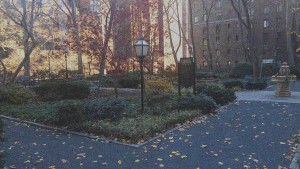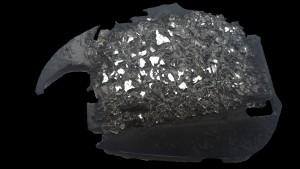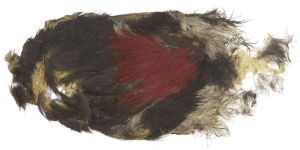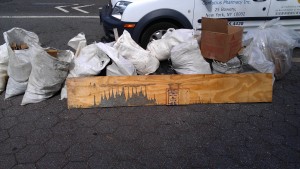Art as a Form of Money
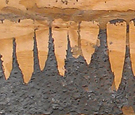
Money today isn’t what it used to be.
In previous centuries the standard medium of exchange was gold or other precious metals. These commodities had certain attributes that made them ideal: they were rare in nature and hard to refine, thus limiting their supply. They were also physically handsome to look at and could be fashioned into beautiful things. They were easier to carry around than more primitive stores of value, such as cows and wives.
Back then if you wanted a piece of paper to be perceived to have value it had to be exchangeable for the physical commodity it represented. Today the value of “fiat” currencies — i.e., money that is based on governments declaring it to be money rather than making it exchangeable for commodities — is taken for granted. A new twist is that if enough people agree that something is money (like Bitcoins), then it becomes money — though the rate at which such things can be exchanged for goods and services can be wildly erratic.
Which leads us to Art. A few hundred years ago anybody could glance at a painting by Leonard da Vinci or Raphael and know that it was art. In the old days art was like pornography; maybe people couldn’t define it but they knew it when they saw it. Today, nobody knows it when they see it. Art no longer has to be beautiful or require a lot of skill to produce like it used to. Part of the reason that the Impressionists were initially ridiculed was the perception among older artists who had labored for decades perfecting their craft that any idiot could dab some paint on a canvas and create this “new” stuff. But all that has changed now.
Take a look at this work:
Let’s say I’m an artist, and I say this is art. Is it? Or suppose I am an art critic. I, too, say it is art. Is it? Or I am an art dealer who agrees that this is art. Is it?
While all of these folks are influential in determining what art is, I submit that none of their opinions ultimately matter unless the item can be exchanged for money. Perhaps I am making a distinction between “art” and “the value of art” but if something has no value, wouldn’t it be more correct just to call it “trash”? What’s the point of a word if nobody knows what it means? In our culture art means money.
Consider three virtually identical 30 x 30″ canvases, all covered with red paint. The first was done by a professional house painter, who did it to give you an idea of the color he can paint your bathroom. He won’t charge you for it if he gets the job, otherwise he’ll bill you for the cost of the materials. The second was produced in a factory by an industrial robot — it is on sale at Walmart for $49.99. The third was painted by a “name” artist whose work has been exhibited in numerous important galleries over decades. It is identified in the Sotheby’s catalogue as a masterpiece and estimated at $360,000 – $400,000. Isn’t the one at Sotheby’s the only one that’s “art?” And if there were a fourth identical red canvas, but one done by a young artist on sale at a local frame shop for $1000, most people would probably say that though it might be art it’s not as good as the one at Sotheby’s. In our culture the price of something pretty much determines its quality, not the other way around.
Now forget about semantics, and about philosophical questions like “What is Art?” Take a look at the two items below. One is a form of money and one is a form of trash. Can you tell which one is which?
It doesn’t matter what your level of taste or education is, there’s no real way to determine which one is garbage. But what if I told you that “Mirrored Armadillo” was exhibited by the Gagosian Gallery? And “Woody Memories” is in fact a natural item — the scalp of a woodpecker.
However, you still may be jumping to the wrong conclusion.
“Mirrored Armadillo” was exhibited (i.e. displayed publicly) by (i.e. in proximity to) the Gagosian Gallery. I found it in the street about a block up from Larry’s Madison Avenue place. I believe it is a side mirror that was knocked off a car and run over a few times. Woodpecker scalps on the other hand were used as money by the Karok people of the Klamath River region, in northernmost California and adjacent parts of Oregon. The example above comes from the collection of the American Numismatic Society.
Either one plus $2.50 will buy you a cup of coffee in New York City.
And what about contemporary artist Tracey Emin’s bed? 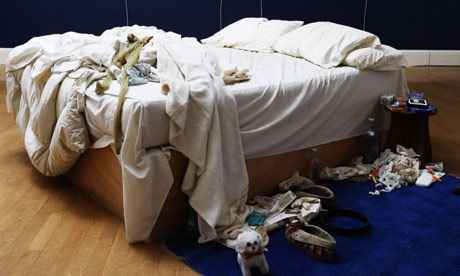 If you aren’t already familiar with this, you might not consider it Art-with-a-capital-A, what with the used condoms, empty bottles of vodka, dirty laundry and the like. But the Tate Gallery in London exhibited it in 1999 and it was shortlisted for the prestigious Turner Prize, causing great indignation among the hoi polloi who thought it was garbage. Whether it is art or not was settled by Charles Saatchi who bought it for £150,000. But is it good art? This question was settled the way we in our culture now settle such matters — namely at auction. It brought £2.2 million at Christie’s this past June.
If you aren’t already familiar with this, you might not consider it Art-with-a-capital-A, what with the used condoms, empty bottles of vodka, dirty laundry and the like. But the Tate Gallery in London exhibited it in 1999 and it was shortlisted for the prestigious Turner Prize, causing great indignation among the hoi polloi who thought it was garbage. Whether it is art or not was settled by Charles Saatchi who bought it for £150,000. But is it good art? This question was settled the way we in our culture now settle such matters — namely at auction. It brought £2.2 million at Christie’s this past June.
As for “City Within the City,” it looks as much like art as anything else. If I could make a hundred somewhat like it each year and get an important dealer to show them at Art Basel, put a few pieces at auction and bid up the prices (rather illegal, of course, but do you really think it isn’t being done?), then I will have created some real value. But I’m just interested in art and was happy to have seen it when it was exhibited on 57th Street.
The emperor may not be wearing clothes, but they look like a million bucks!
